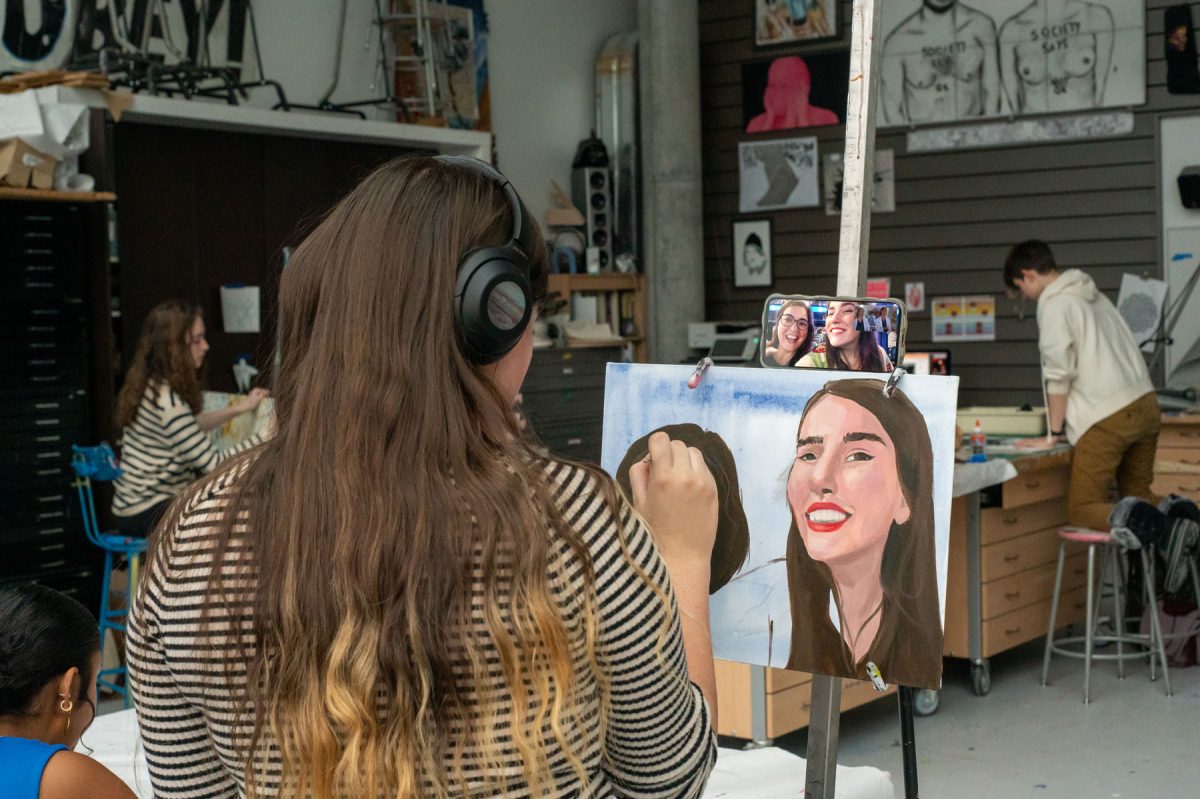“And you give really meaningful assignments.”
Lower school art teacher Allison Beaulieu reads this final sentence once, then again, smiling to herself. She folds up the letter from one of her fifth-grade students and tucks it back into her file cabinet before turning away to meet her next class.
It can sometimes feel like students at the Laboratory Schools are taught early to focus on their core classes and work, which can sometimes crowd out visual arts and theater in a student’s mind and day. Ms. Beaulieu feels that art can and should be a break and a contrast from more purely academic subjects and settings — she and her fine arts colleagues at Lab’s lower, middle and high schools work tirelessly to turn this feeling into motivation to help their students appreciate art in and out of the classroom.
“I feel like a lot of what they’re experiencing in their other classes is, like, deadlines and competition,” Ms. Beaulieu said. “And not that those are necessarily negative but things that are very linear. And art classes are kind of the opposite of that.”
In the soft, paint-scented glow of the lower school art classroom, Ms. Beaulieu’s work is never finished. There’s always something new to be done for the young artists, whether it be powering up the kiln and firing 50 sculptures, printing out hundreds of digital artworks or cleaning paint and glue stains off the walls. But the tasks that take up much of her day pale in comparison to the fulfillment and joy she gets from watching her students fall in love with art through passionate, hands-on experiences.
“I have to unload a kiln, and we’re doing Procreate today, and I’m gonna try to print some of their work out,” Ms. Beaulieu said. “We’re also starting our weaving project in third grade, so they’re excited about that.”
Ms. Beaulieu also hopes that for the rest of their lives, her students will be able to turn to art whenever they need to and that it’ll instill in them valuable qualities that they’ll be grateful to have.
“I hope that they use art as a tool to see connection and find empathy in others,” Ms. Beaulieu said. “I hope that they understand the importance that art brings to the world and are able to fund artists in their lives and keep art thriving.”
Senior Cassia Collins took studio art with U-High art teacher Sunny Neater in her junior year. Cassia said that the wide variety of artistic styles and expressions that Ms. Neater showed her students was a huge contributor to her overall appreciation for art.
“Ms. Neater tries to expose us to lots of different types of art and then has us try to make things in that style, which really helps us understand the amount of skill and technique needed to create good art,” Cassia said. “She shows us different artists who do such different styles and mediums, and it leads to an overall greater appreciation.”
High school ceramics teacher Brian Wildeman’s hope for his students is that art will remain something they can always fall back on for the rest of their lives.
“It doesn’t matter to me what kind of creativity,” Mr. Wildeman said. “But I hope they have a creative outlet that’s fulfilling. I’ve had students that, you know, went into business or whatever, and found it soul-crushing, and then came back to art. So to know that there was something kindled there, that they found redeeming and were able to rediscover — it’s really important to me.”
Like Ms. Beaulieu, Mr. Wildeman’s days include lots of classroom and material maintenance. But rather than chores, he sees these odd jobs as opportunities to discover new ways to connect with and help his students.
“I was chopping up some clay that is too stiff to do anything with, and I was getting ready to throw it in the reclaim bucket, and I thought the little pieces of it looked really cool and interesting,” Mr. Wildeman said. “So I thought, rather than throw this clay away, I’m gonna demo with it how to do a handbuilding project. I try to stay open to discoveries of other things to do for assignments and ideas.”
At the end of the day, Ms. Beaulieu dusts off her clothes and rinses her hands, preparing to leave for the night. She flicks off the lights in her classroom while thinking about what project she’ll assign next — and as she leaves the building, she thinks about what each of her students made that day, and what they might make tomorrow.



















